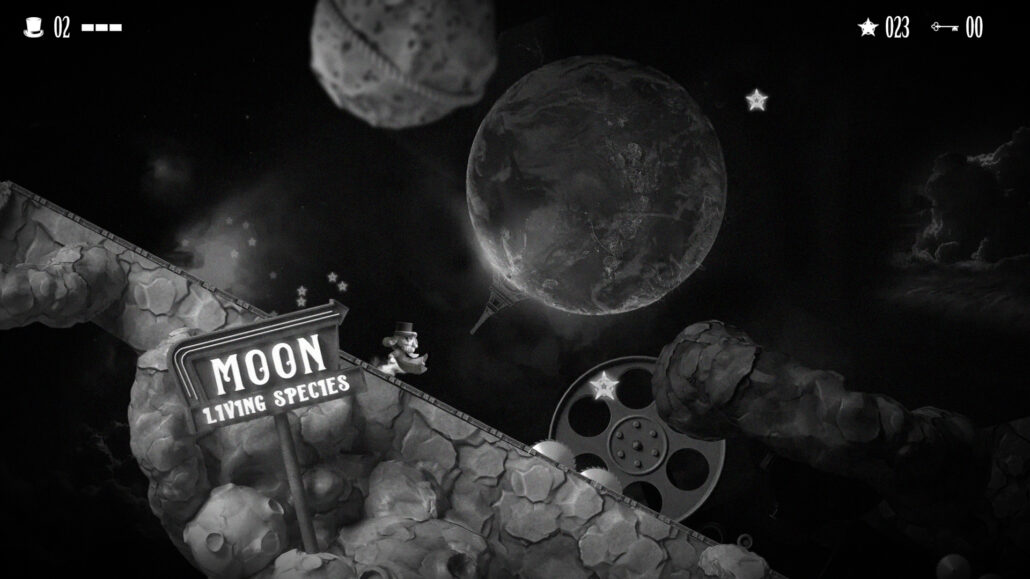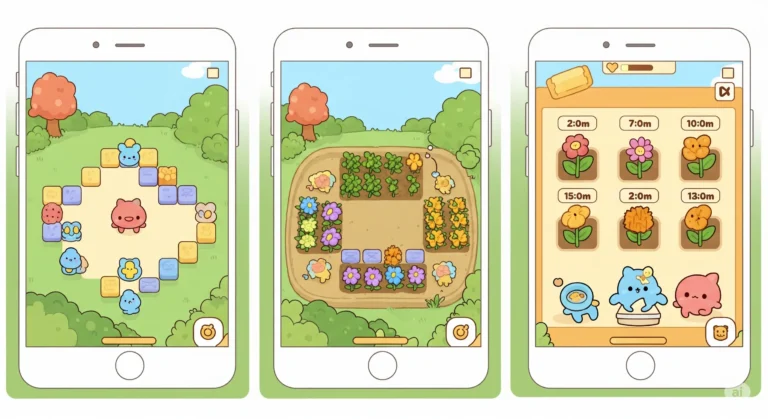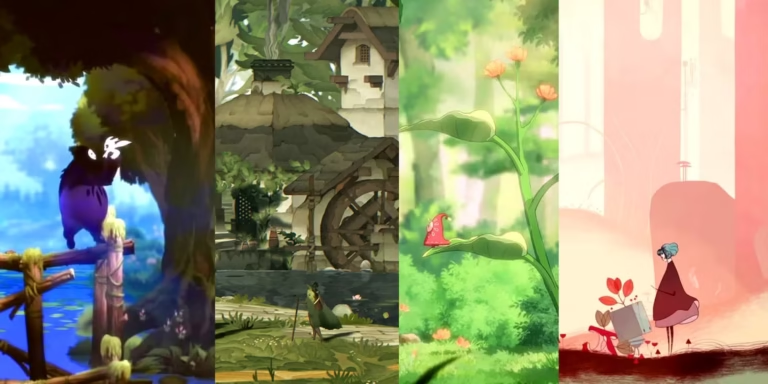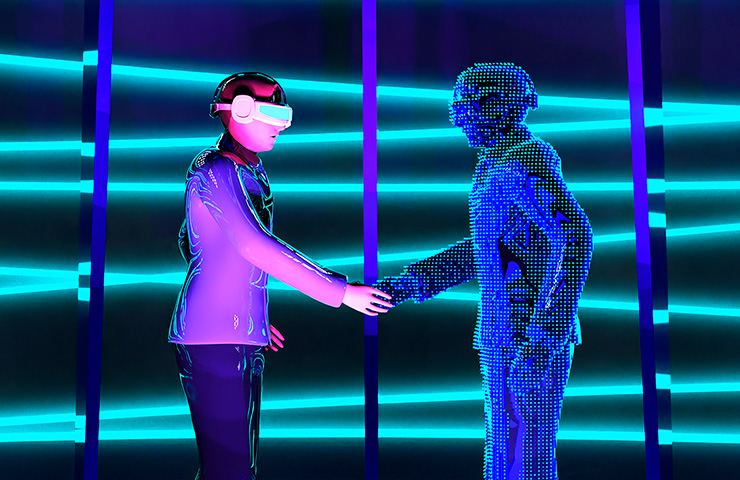The monochrome art style refers to artwork created using variations of a single color or shades of one hue. This approach can include different tones, tints, and shades to create depth, contrast, and interest within the piece. Visual Presentation is one of the key components of any game, the range of art styles in games today is vast, with photorealism on one end of the spectrum and highly abstract on the other. Yet, throughout gaming history, there has been a strong thread of minimalism expressed through monochromatic art styles that limit the color palette to shades of a single hue.
In this article, we will unwrap what monochrome art style is, what is the usage of monochrome art style and how it can be used alongside gameplay in order to achieve appealing play time for the player.


Need Game Art Services?
Visit our Game Art Service page to see how we can help bring your ideas to life!
I- The Beginnings of Monochrome
As for game production history, The origins of the monochrome approach lie partly in the technical limitations of gaming’s early days. But monochrome has proven to have real staying power as both an aesthetic choice and a vehicle for conveying symbolic meaning.
The roots of monochromatic art can be traced back to ancient civilizations where artists, limited by available pigments, explored the depths of creativity within a singular color spectrum. Over time, this artistic technique evolved, gaining prominence during movements like the Romantic period, where artists embraced the power of shadows and highlights to convey intense emotions.
With the advent of digital technology, monochromatic art leaped from traditional canvases to the digital realm. Artists now had powerful tools at their disposal to experiment with lighting, shading, and texture, all within a monochromatic palette. As this technique gained momentum, it found its way into the heart of one of the most innovative and interactive forms of art: video games.
When video games first emerged in the 1950s and 60s, graphics capabilities were extremely limited. The earliest games used basic geometrical shapes and lines on a plain black background out of necessity. The release of the Atari 2600 in 1977 brought with it classic monochrome games like Combat, Breakout, and Pong. This began establishing an early gaming aesthetic rooted in simplicity.
While some of the minimalism stemmed from technical restrictions, there was also an influence from contemporary art movements focused on minimalism, functionality, and stripping design to bare essentials. If interested, You can read more on game genres Here.

II- Benefits of Monochrome Art Style
II-I- Emphasizing Mood and Atmosphere
One of the key reasons game developers adopt the monochromatic style is its unparalleled ability to set the mood and evoke emotions. By restricting the color palette, developers can amplify the atmosphere of a game, engaging players in a world drenched in a specific emotion, be it the eerie silence of a post-apocalyptic wasteland or the melancholic beauty of a fading dream.
Each color has its own emotional weight, especially when placed alongside the proper musical environment and story. Once everything is at its right place, monochrome art style can launch a game or even animation to the moon, try looking at it like a box that wraps everything in itself and makes it ready to present
II-II- Creating a Unique Visual Identity
Monochromatic art isn’t just a stylistic choice; it’s a statement. Games employing this technique stand out amidst a sea of vibrant hues, offering players a visual experience that lingers in their memory. The deliberate use of light and shadow in a monochromatic palette crafts a distinctive visual identity, making these games instantly recognizable and etching themselves into the gaming community’s collective consciousness.
II-III- Enhancing Storytelling and Emotional Impact
Every shade in a monochromatic masterpiece tells a story. The interplay of light and dark becomes a language, narrating the game’s tale in subtle, nuanced ways. This artistic choice deepens the emotional impact of the narrative, allowing players to connect with characters and events on a profound level. The absence of color becomes a canvas for players’ imagination, encouraging them to fill the void with their emotions and interpretations.
One example is that you can easily create the feeling of hope or a safe haven for a player while everything is a shade of black, and suddenly, there is a little light somewhere in your composition.
Once gaming technology progressed to allow more complex graphics, game developers realized strategic use of color could heighten storytelling and immerse players in their digital worlds. Limiting color palettes to shades of a single hue came into practice as an artful way of conveying mood and emphasizing themes. An early example of this is LucasArts’ Loom from 1990, which uses a predominantly grey palette to create a somber, eerie atmosphere fitting its dark fantasy setting.
The indie game Limbo took this concept to the extreme in 2010 by presenting its entire world in black and white, without a dash of color anywhere. The moody, minimalist game art styles directions crafts a sense of loneliness and uncertainty. Similarly, the 2008 game The Graveyard goes for a sepia-toned monochromatic look as an artistic choice to complement its reflective pacing and tone. Shades of brown evoke nostalgia and melancholy. We will proceed to discuss games with monochrome art styles in the following sections.

III- Examples of Monochrome Style in Games
III-I- Early Examples: Setting the Foundation
Limbo:
Limbo, developed by Playdead, is a pioneering title that embraced the monochromatic style, using shades of black and white to craft a hauntingly beautiful world. The game’s silhouetted characters and environments create an eerie atmosphere, enhancing the sense of mystery and danger. Limbo’s monochromatic design not only captivated players but also influenced a new wave of game developers, inspiring them to experiment with limited color palettes.
Badland:
Badland, a critically acclaimed mobile game by Frogmind, showcased the potential of monochromatic art in the mobile gaming industry. The game’s surreal, side-scrolling world, filled with intricate obstacles and puzzles, immersed players in a visually stunning adventure. Badland’s use of shades and silhouettes demonstrated how monochromatic design could elevate mobile gaming experiences, paving the way for more artistic experimentation on handheld devices.
III-II- Modern Masterpieces: Pushing Boundaries
Gris:
Gris, developed by Nomada Studio, is a breathtaking example of monochromatic artistry. The game seamlessly blends delicate watercolor-like visuals with a subdued color palette, creating a visually poetic narrative.
Gris uses colors sparingly, allowing players to witness the gradual transformation of the game world as the protagonist overcomes emotional challenges. Each level in Gris is a canvas, painting an evocative story of grief, loss, and hope through the subtle interplay of colors and emotions.
Inside:
Inside, crafted by Playdead, builds upon the success of Limbo, refining the monochromatic art style to perfection. The game’s minimalist approach to color amplifies the sense of dread and curiosity as players navigate through a dystopian world.
Inside’s use of shadows and contrasts not only adds depth to its environments but also emphasizes the game’s underlying themes, leaving players in awe of its visual storytelling prowess.
Hollow Knight:
Team Cherry’s Hollow Knight is a Metroidvania masterpiece that incorporates monochromatic elements to enhance its atmospheric world. The game’s detailed, hand-drawn environments are predominantly rendered in shades of black and white, creating a sense of foreboding mystery.
The strategic use of color accents draws attention to essential elements, guiding players through the game’s labyrinthine landscapes. Hollow Knight’s monochromatic design contributes to the game’s immersive exploration and emotional depth, making it a standout example of the genre.
IV- Technical Functionality
Monochromatic styles continue to have a place in game art outsourcing services when technical pragmatism is a priority. Game Boy-era Pokémon games minimized their color use, so the limited graphics would render swiftly.
Today, the technique remains useful for developers working with low processing power, like those creating games for Nintendo Switch compared to other consoles. Using a simpler color palette helps ensure smooth gameplay performance across the board.
There is also a place for monochrome in paying homage to gaming history through intentional retro throwback aesthetics. Hyper Light Drifter utilizes a pixelated style with a limited color palette as a tribute to classics of the 8-bit and 16-bit eras. The minimalist vibe helps recapture the feel of early gaming generations.
Not all modern monochromatic games are trying to recreate the past. Some use a pared-down art style as an expressive, thematic choice without technical constraints. The high-contrast black, white, and red palette of MadWorld creates a stark, stylistic look reminiscent of Frank Miller’s Sin City graphic novels. This hyperbolic approach underscores the game’s outrageous violence and darkly comic tone.
Mirror’s Edge employs a clean, modernist aesthetic in shades of white and bright accent colors to convey the streamlined futuristic setting. Contrasting the depthless white environments with vivid red or orange doorways serves both an artistic and gameplay function in a platformer where identifying interactive elements is crucial.
V- Challenges and Considerations in Using Monochromatic Art
V-I- Potential Limitations and Constraints
Despite its artistic appeal, the monochromatic art style presents unique challenges to game developers. The absence of a diverse color palette demands meticulous attention to detail, as subtle changes in shading and contrast become pivotal in conveying depth and perspective.
Moreover, developers must strike a delicate balance between minimalism and visual engagement, ensuring that the absence of color does not lead to visual monotony or player disinterest. Meeting these challenges requires a deep understanding of artistic fundamentals and a keen eye for design nuances.
V-II- Techniques to Overcome Challenges
To overcome the challenges associated with monochromatic art, developers employ various techniques and strategies. Detailed lighting effects, intricate textures, and dynamic shadows play a crucial role in creating visual diversity within a limited color range.
By mastering the interplay of light and dark, developers can infuse monochromatic scenes with depth and realism, enriching the player’s visual experience. Additionally, thoughtful level design, character animation, and environmental storytelling contribute to the overall visual appeal, ensuring that players remain engrossed in the game world despite the absence of a broad color spectrum.
V-III- Balancing Visual Aesthetics with Gameplay Experience
Achieving a harmonious balance between visual aesthetics and gameplay experience is paramount in monochromatic games. While stunning visuals can captivate players, they must complement and enhance the core gameplay mechanics. Monochromatic art should not overshadow the interactive elements of the game; instead, it should serve as a supportive backdrop, enriching the player’s immersion and emotional connection. Striking this balance requires iterative design, playtesting, and feedback analysis, ensuring that the monochromatic art style harmoniously aligns with the game’s interactive aspects, resulting in a cohesive and captivating player experience.
Conclusion
Monochromatic art styles have been integral to video games since the early days, originating from technical limitations but evolving into an impactful aesthetic technique. Strategic use of limited color palettes can evoke moods, convey themes, and create striking visual identities for games.
Monochrome’s versatility endures today for developers seeking symbolic storytelling, technical functionality, or nostalgic retro homages. Though not without design challenges, monochromatic art continues influencing modern indie and major studio games for its timeless emotional resonance and minimalist appeal. The creative possibilities within a limited color range ensure monochrome’s enduring artistic legacy












